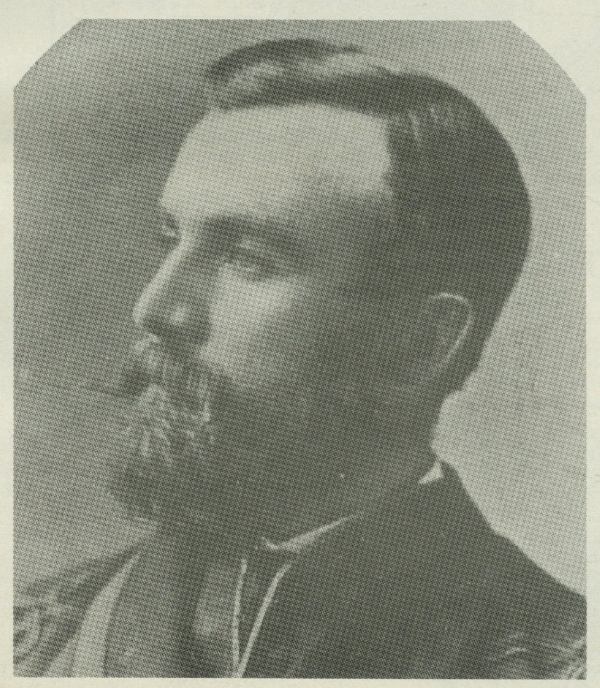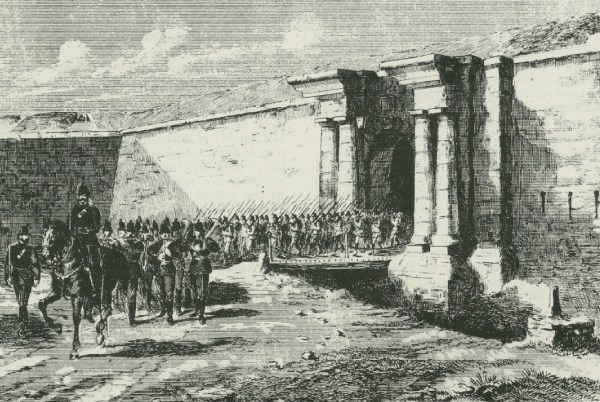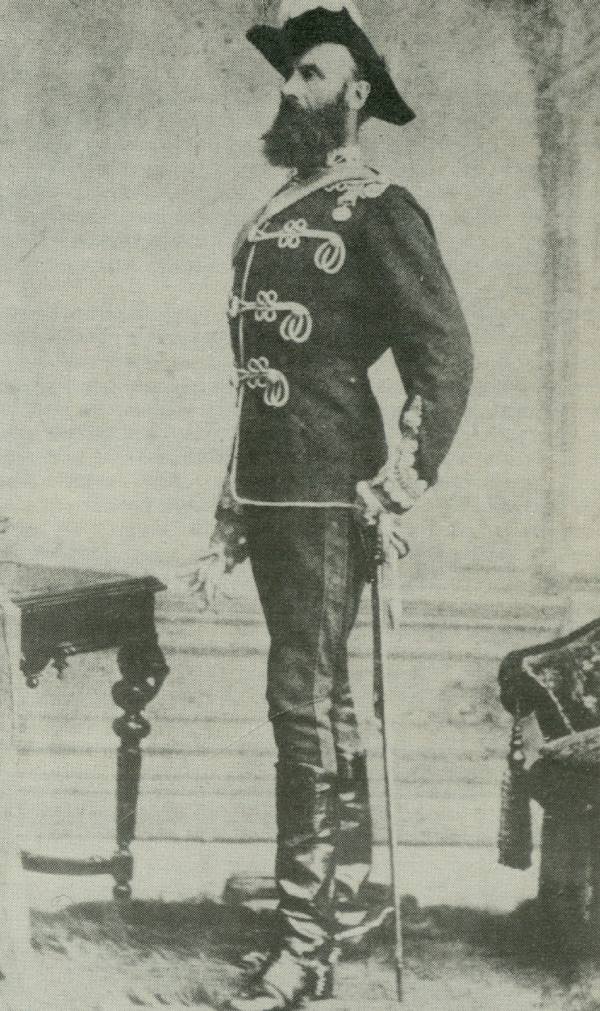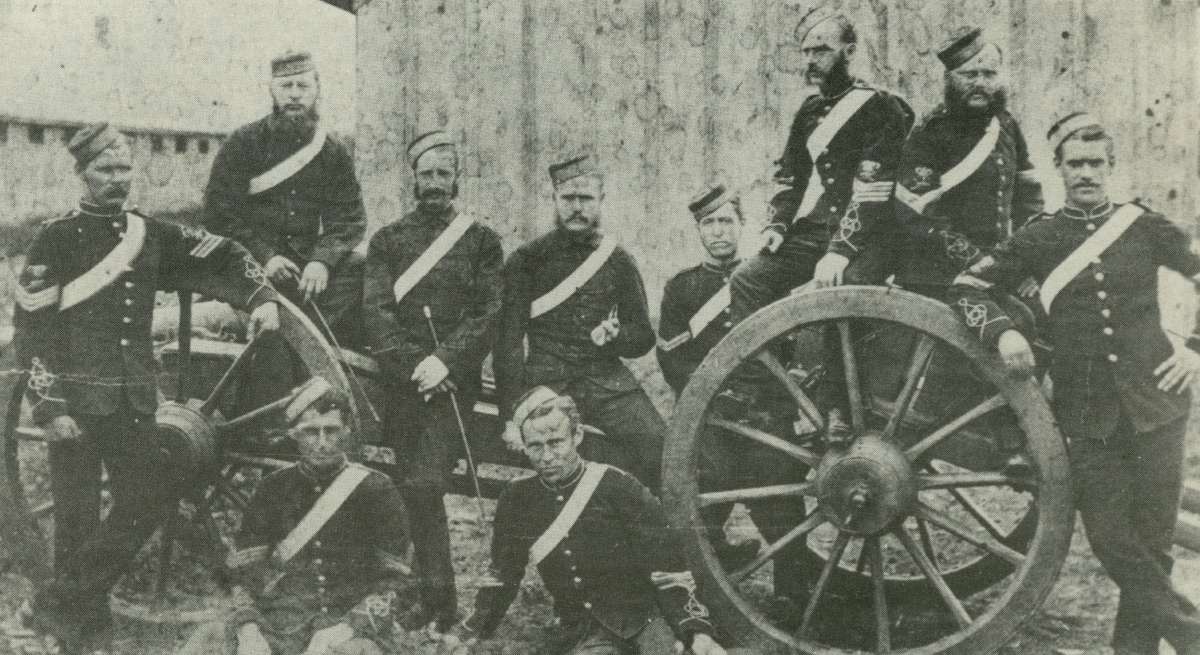The Creation of Canada’s Permanent Military Force (1871–1883) National Historic Event

© Courtesy of the Department of National Defence / Mitchel, George Duncan. RCHA – right of the line: an anecdotal history of the Royal Canadian Horse Artillery. Ottawa: RCHA History Committee, 1986, 3
The Creation of Canada’s Permanent Military Force (1871-1883) was designated as a national historic event in 2023.
Historical importance: The creation of a small permanent force marked the beginnings of military professionalization in Canada.
Commemorative plaque: No plaque installedFootnote 1
The Creation of Canada’s Permanent Military Force (1871-1883)
The creation of Canada’s permanent military force ended more than a century of dependence upon Britain and represented the beginnings of military professionalization in Canada. It followed the withdrawal of all British troops in 1870–1871, except for garrisons at Halifax and Esquimalt. At the time, Britain was trying to reduce the funds and forces needed for the defence of its empire while also working to improve relations with the United States, which diminished the need for troops in North America.
For more than a century after the Seven Years’ War (1756–1763), the British Army and Royal Navy defended British North America, with support from local militias and in partnership with First Nations allies. Following Canadian Confederation in 1867, defence became a federal responsibility. The Militia Act of 1868 established the Department of Militia and Defence, along with a volunteer militia. The federal government assumed it could continue to rely on Britain, even as the number of British troops in Canada declined from roughly 15,700 in 1867 to about 4,000 in 1869. By November 1871, Britain had handed over military stores, fortifications, and other properties to Canada, and withdrew almost all its forces.

© Courtesy of the Department of National Defence / Charbonneau, André, Desloges, Yvon, and Lafrance, Marc. Québec—The Fortified City. Ottawa: Parks Canada, Minister of Supply and Services Canada, 1982. 446-447

© Courtesy of the Department of National Defence / Charbonneau, André, Desloges, Yvon, and Lafrance, Marc. Québec—The Fortified City. Ottawa: Parks Canada, Minister of Supply and Services Canada, 1982. 446-447

© Courtesy of the Department of National Defence / Mitchel, George Duncan. RCHA – right of the line: an anecdotal history of the Royal Canadian Horse Artillery. Ottawa: RCHA History Committee, 1986, 3
In Canada, there was little popular or political support for the creation of a standing army. As a result, Canada only reluctantly responded to the British withdrawal by raising permanent garrisons at two strategically significant locations, to reduce their vulnerability to an American attack. On 20 October 1871, Militia General Order No. 24 authorized the creation of A and B Batteries of garrison artillery, with responsibility for training the militia at two new schools of gunnery and for safeguarding the magazines, armaments, artillery, and stores left behind by the British Army at Fort Henry in Kingston, and at the Québec Citadel.
"The creation of Canada's permanent military force is a watershed moment in Canadian history. After long relying on British forces for their protection, with the creation of permanent force units such as A and B Batteries in Kingston and Quebec City, the young dominion was taking its first tenuous steps towards its own professional military and assuming responsibility for its own national defence. Although there was still a long road to travel, we can see in the creation of Canada's early permanent military units the origins of what would eventually become a world-renowned, professional, armed forces."
These batteries of garrison artillery laid the foundations for the permanent force and, in 1873, became the first full-time, regular army units in Canada, reorganized in 1883 as the Regiment of Canadian Artillery. Experienced British officers commanded the two batteries, which each had a Mounted Division and a Dismounted Division, and were staffed by militiamen on short-service call-out before the move to full-time, continuous service. This force did not reflect the diversity of Canadian society at the time, as racialized people and Indigenous Peoples faced barriers to military service.
For much of its early history, this small permanent force played a central role in Canadian attempts to improve military efficiency by training officers and men. This role was formally recognized and expanded by the Militia Act of 1883, which increased the total strength of the permanent force to 750 and authorized the formation of the Cavalry School Corps (Royal Canadian Dragoons) at Québec, the Infantry School Corps (Royal Canadian Regiment) at Fredericton, Saint-Jean-sur-Richelieu, and Toronto, and C Battery and its school of artillery at Esquimalt.

© Courtesy of the Department of National Defence / Mitchel, George Duncan. RCHA – right of the line: an anecdotal history of the Royal Canadian Horse Artillery. Ottawa: RCHA History Committee, 1986, Xi-3
This press backgrounder was prepared at the time of the Ministerial announcement in 2024.
The National Program of Historical Commemoration relies on the participation of Canadians in the identification of places, events and persons of national historic significance. Any member of the public can nominate a topic for consideration by the Historic Sites and Monuments Board of Canada.
- Date modified :